On Dec. 9, 2022, a few dozen veterans attended a special ceremony chaired by Admiral Pierre Vandier, French Navy chief of staff, followed by a flypast of seven helicopters. The last three Alouette IIIs (SA 319B) still in service (under the colors of the 34F flotilla) were followed by three Dauphin AS365 N3s. Leading the group was a wheeled Alouette II, the last one in flying order, at least in France. It was flown by Pascal Petitgenet (founder and CEO of Heli Technique).
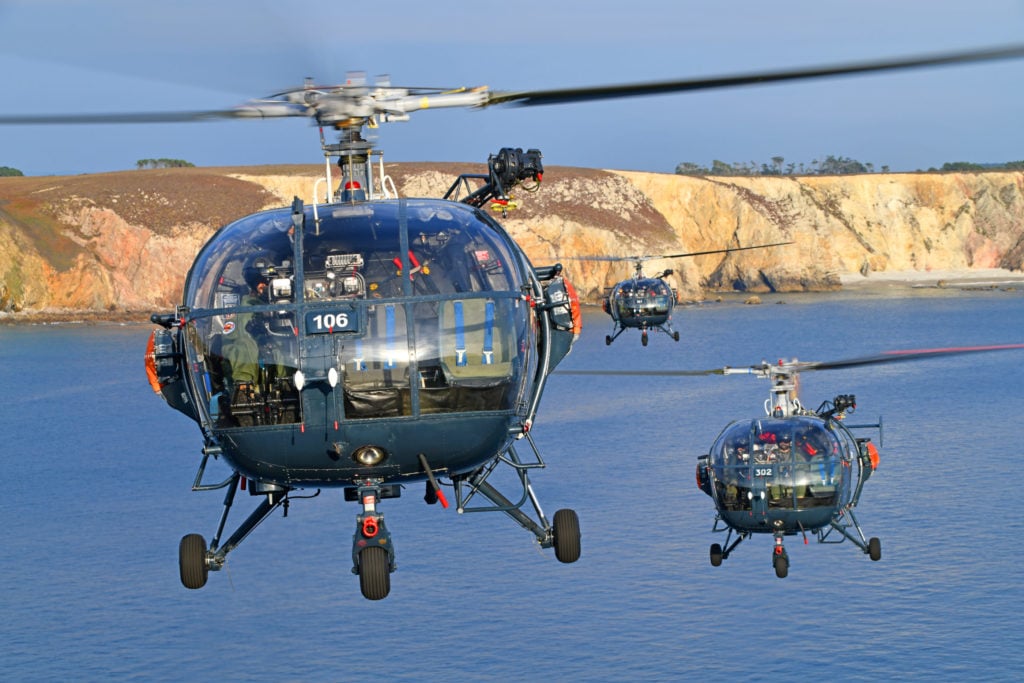
All things come to an end, and the end for the Alouette III has finally arrived, after 60 years of very good and loyal service under the colors of the Aéronautique Navale (French Navy Aviation). Over the decades, the Alouette (French for “lark”) III became part of the French landscape, and one would have thought that the story would never end.
A regularly maintained helicopter, with parts changed when required, could have an almost unlimited lifespan. On the other hand, the Alouette’s maintenance was more and more costly in terms of manpower, while the obsolescence of certain parts that were no longer manufactured was becoming problematic. The type’s level of performance also began to pale in comparison to that of modern helicopters.
Nevertheless, the Alouette was a symbol — and it is always difficult to give up a symbol. The helicopter personified the triumphant France of the 1960s, rich in a solid, sovereign, innovative and exporting industry. The withdrawal of the last three Alouettes — numbers 997, 161 and 302 — which flew until 2022’s last hours, also epitomizes the end of a magnificent era for the French Navy. A navy that still possessed, in the mid-1980s, two aircraft carriers, around 40 well-armed frigates and corvettes and around 20 submarines. Forty years later, these figures have halved.
The lark, a seabird ?
The French Navy very quickly took an interest in the Alouette III, whose level of performance suggested numerous applications, both from land bases and onboard ships. A total of 37 examples have been used over the years, in two main versions: the SA 316B, with some equipped for instrument flying and aircrew training; and the more powerful SA 319B, intended to be embarked on the anti-submarine frigates of the Tourville type.
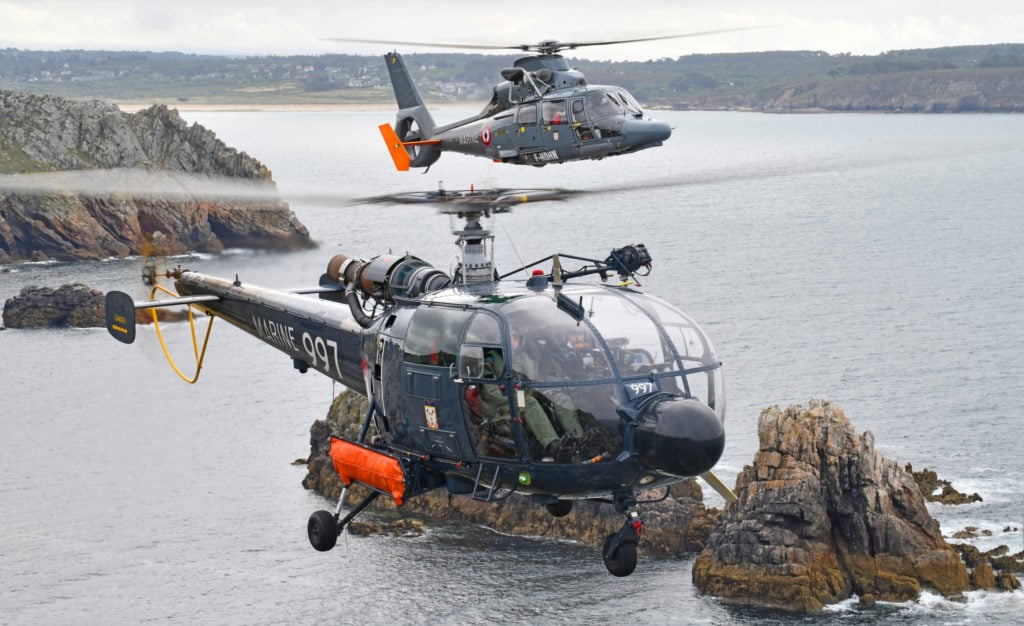
The helicopter could be armed with two light torpedoes (although only one was carried most of the time), which constituted a revolution for the Navy. For the first time, it had a helicopter offering a real offensive capability. The Alouette IIIs were later replaced in the Anti Submarine Warfare (ASW) mission role by the Lynx.
Overseas, the Alouette’s reliability worked wonders from New Caledonia to the French Antilles (in the Caribbean Sea), via Polynesia and Reunion Island (in the Indian Ocean).
The helicopter withstood tropical climates well, and showed very good availability in all circumstances.
“The helicopters were posted two or three years overseas, with a scheduled VAOM (Visite Annuelle Outre-Mer, or annual overseas overhaul) that was done on site,” explained Premier Maitre (equivalent to Senior Chief Petty Officer) Cédric (the French armed forces policy is to provide only first names in media, for security reasons). “For this VAOM, the detachment received the assistance of three or four people from metropolitan France, and the AOG could last from six to eight weeks. And then the helicopter was off again for a year of intensive use.”
Each detachment overseas included a helicopter, two pilots with full qualifications (possibly a third pilot fresh from flight school and lacking some qualifications), and six or seven mechanics.
Its availability was legendary, as one crew member recalled: “During my last deployment to La Martinique (Carribean), only one flight was canceled in two and a half months of operation. And despite its age, the Alouette played its role well. We did a lot of anti-narco [narcotics] work alongside the Panthers. The Panthers took care of fast ships, but we could take care of slow movers. I remember in 2018 we found a ton of cocaine on a sailboat during my first week there.”
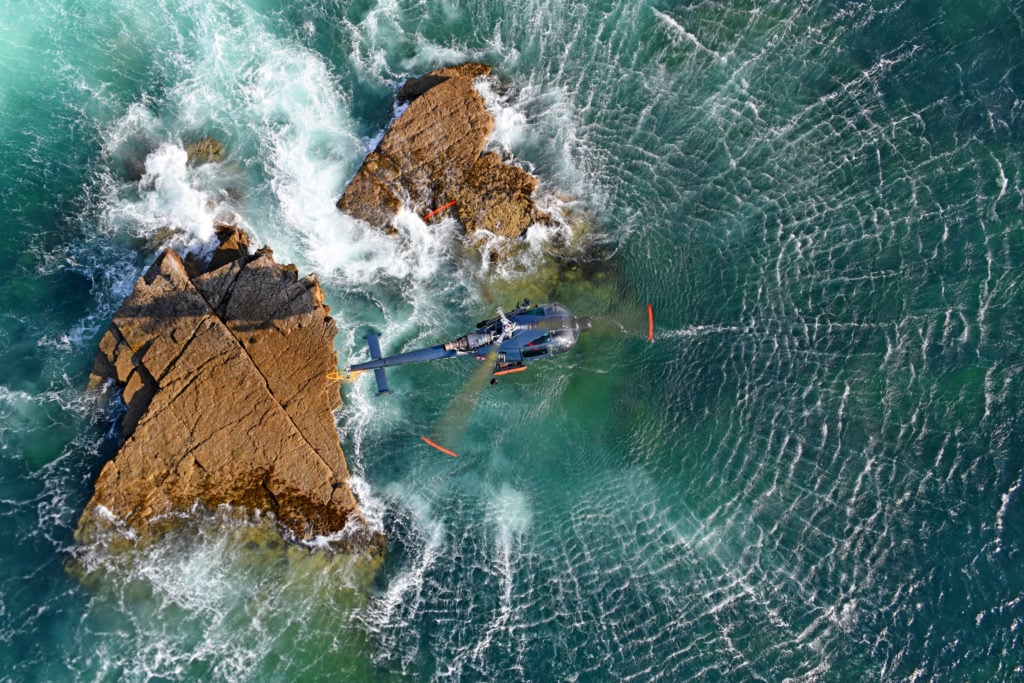
The Alouettes worked around the world, fighting narcotic smugglers, gathering intelligence, monitoring fishing, taking part in medical evacuation, or winching people from the sea.
The Alouette III also left a deep mark in terms of training. The 22S squadron has not only trained all French Navy helicopter pilots, but also those from other armies requiring a deck-landing qualification. The young pilots who sweated on board always ended up understanding, with a few years of hindsight, that the machine they found so complex and delicate to handle was in fact a monster of simplicity. “A moped with a big luggage rack,” say the elders.
With each deployment of the Carrier Air Group, one or two Alouettes were also invited on the Charles-de-Gaulle aircraft carrier to carry out the Pedro mission (rescue of ejected pilots), but only during daytime. At night, the Pedro mission remained the prerogative of the Dauphin, which had the necessary avionics for nighttime hovering.
The last Navy pilots were trained on the Alouette III in 2018. Since then, the instruction work has been passed to the Dauphin of the ESHE (Ecole de Spécialisation sur Hélicoptères Embarqués, or embarked helicopters specialisation school), within the 34F flotilla.
“Taking into account the absence of an autopilot and the very limited avionics, it became very difficult to justify the Alouette’s use for training assignments,” said Commander Anne-Julie Gonnot, commanding the flotilla. “Continuing training on such an old single-engine aircraft made no sense, especially since every other helicopter in the Navy was twin-engine.”
The last four years of its operational life, the type was reassigned exclusively to operational missions with the 34F.
Near perfect availability
Last November, an Alouette was still in operation, embarked on the BCR (Bâtiment de Commandement et de Ravitaillement, or command and supply ship) La Somme as part of the Silent Wolverine exercise with the American aircraft carrier Gerald Ford as its flagship. In July 2022, another helicopter carried out the last long-term embarkation on the anti-submarine warfare frigate Latouche Tréville. It was an opportunity to demonstrate, one last time, how easy it was to use and maintain far from its base. Until the end of 2022, the last three Alouettes also took part in the surveillance of the Brest narrows during the entry and exit of the French deterrence ballistic missile submarines.
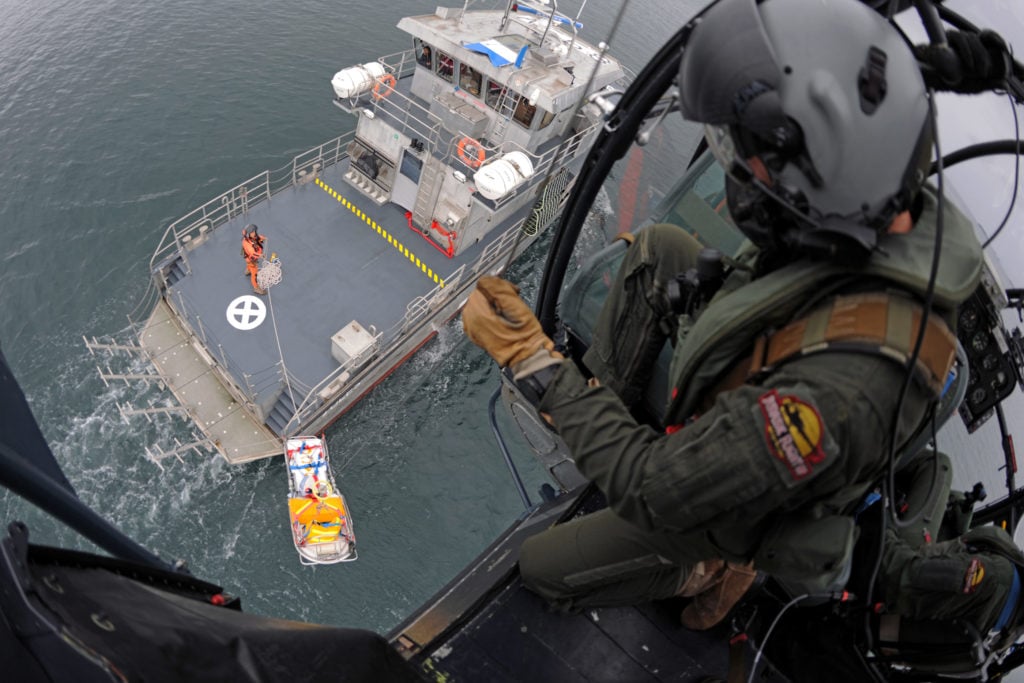
“Because of its ease of maintenance, the Alouette was particularly well suited to ship operations,” recalled Petty Officer Jean-Marc of the 34F flotilla. “The availability rate at sea was incredible — with good routine maintenance, we easily exceeded 90 percent. Day and night, we could guarantee the availability of the onboard helicopter.”
That said, the last few months have sometimes been complicated: for example, it took about 15 hours of maintenance work per hour of flight, a figure roughly equivalent to the Lynx. And even if the navy had large stocks, some spare parts were missing and there was no question of restarting production.
Ease of use is a key word that often comes up in conversations with Alouette pilots, none of whom have anything bad to say about the helicopter, even if it was legitimate for most of them to expect to transition one day to a slightly more modern chopper.
“The Alouette offered exceptional all-round visibility along with true ‘hands on’ [flying] and sensations that we will never find again, without a digital interface and sometimes even without hydraulic assistance,” said Lieutenant Commander Christophe. “The Alouette was undoubtedly the last helicopter that could be piloted directly in the event of a hydraulic failure, without the aid of the servos. A bit like driving a big car without power steering. It was a little rough, we had lost the habit of it, but it was still possible.”
Spartan helicopter
On the SA 316Bs, the oldest of the Alouette IIIs, the collective had no anchorage. It was impossible to let go of the controls lest the aircraft, which also had no trim, did as it pleased. For these reasons and a few others, and in particular its inertia at the controls, the Alouette was enough to confuse young pilots.

When embarked at sea, its range was limited to 60 nm (110 km) around its ship, to offer a good chance of recovering the crew in the event of an engine failure. But today within the 34F, no one remembers the Artouste engine flaming out.
“The turbine was a boiler in which you just had to put coal to make it work,” said Premier Maitre Cédric. Commonplace missions could be done with a single pilot. The pilot at the controls then sat in the right seat, with two empty seats to his left. A few minutes of work were enough to dismantle the cyclic and the collective and install covers on the rudder pedals of the second pilot.
In recent years, the Alouette was an attraction wherever it went. The elders remembered it with tears in their eyes, the youngsters were surprised by its Spartan equipment, its simplicity, its canvas seats with a frame made of welded tubes, but also the exceptional visibility it offered.
The last three Alouette IIIs of the French Navy were permanently withdrawn from service on Dec. 31. The 34F flotilla already uses a single Dauphin N3 called FI (Flotte Intermédiaire, or interim fleet) for public service missions. A second Dauphin FI should arrive in the flotilla during 2023. This second helicopter will be equipped with a glass cockpit and it is planned that the first, now equipped with an analog dashboard, will be modernized and also receive a modern instrumentation.
These aircraft will make be replaced around 2030 by the first H160 Guepard (cheetah). “We really liked the Alouette, but we must recognize that its capacity was limited,” explains Commander Anne-Julie Gonnot the commander of the 34F . “We will still be happy in the future to have two engines and a radar to protect the boats on which we embark.”







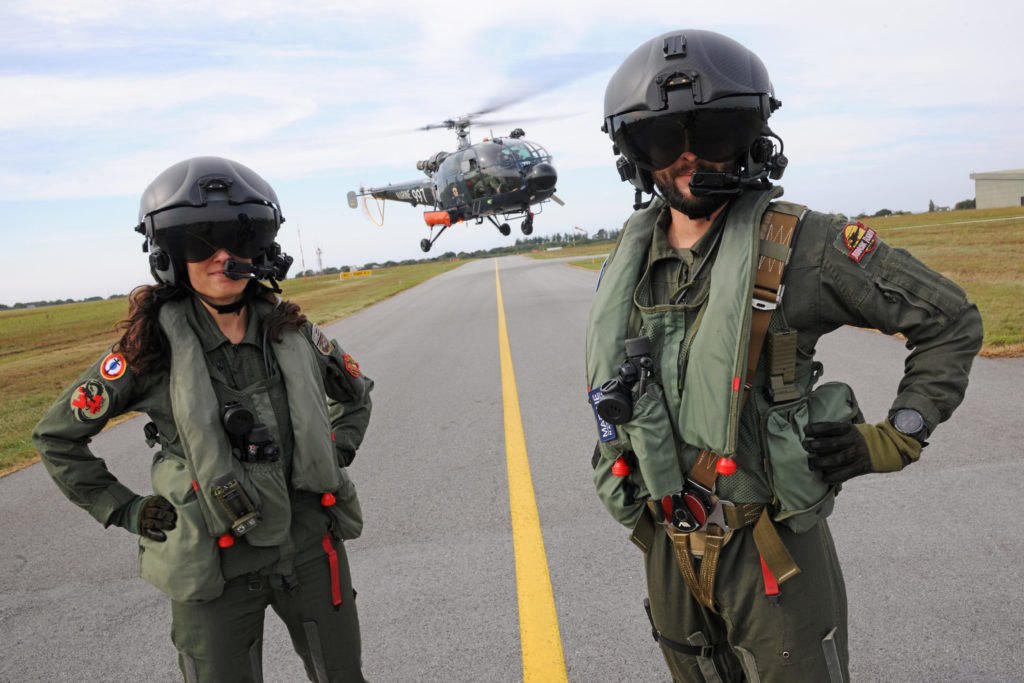
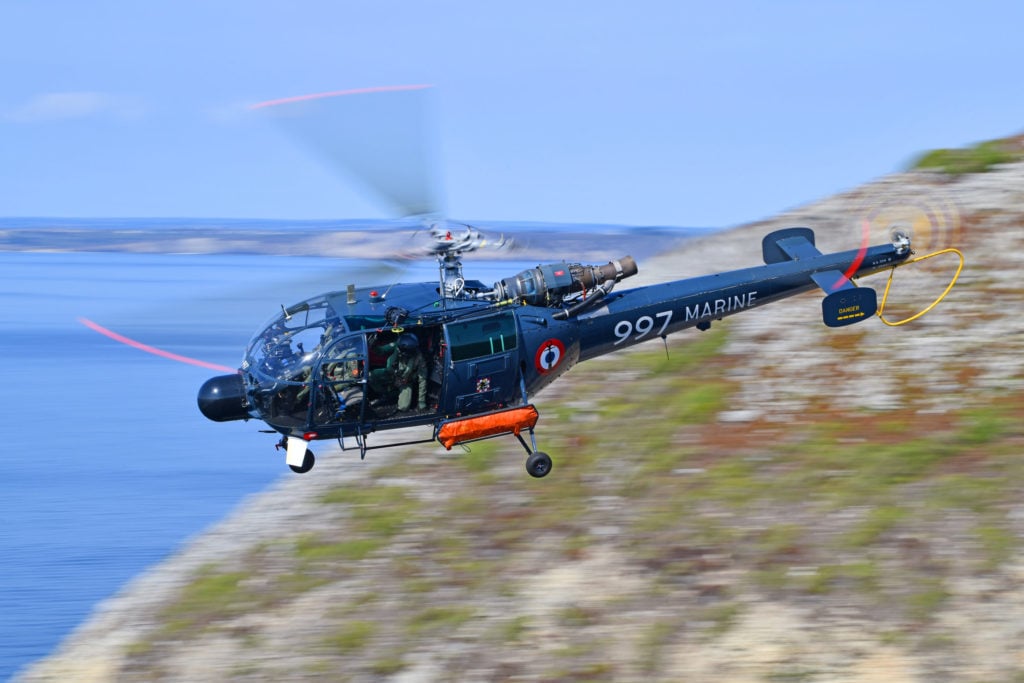
Thank you very much, Frederic, for this article full of realism and a touch of nostalgia. It shows that hardiness is a major quality of a product in naval operations, let’s hope that the future H160M will not have forgotten the lessons learned with its illustrious predecessor.